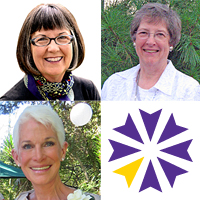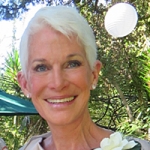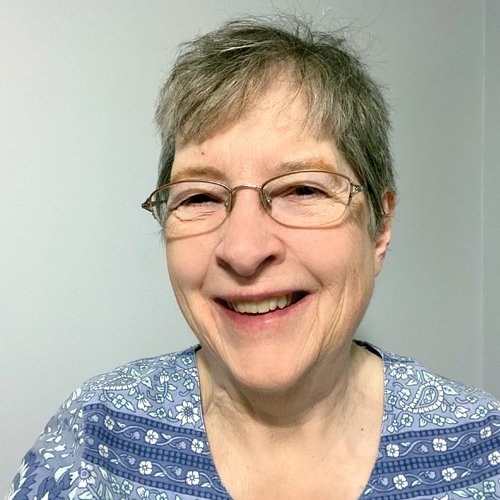
GOLD Lactation Alumni Presentations 2017
Originally held as live webinars, the recordings are now available to be accessed online. It was an exciting day for our delegates who had the opportunity to delve deeper into case studies and new discoveries, and expand their knowledge and clinical skills. Kay Hoover will be asking you to put your detective hat on as she presents some unusual case studies, Barbara Wilson-Clay will be providing an in depth look at newborn assessment (an essential skill!) and Jane Morton will be sharing her wisdom and looking at the impact of teaching hand expression in the first hour as a way to prevent breastfeeding challenges.
Free to GOLD Learning Delegates with Alumni Status - Do you have Alumni status? As a special thank you to our past participants that have attended 5 or more Conferences, you are invited to attend with a complimentary registration. Add this package to your cart and follow the check out process. When prompted, login with your GOLD Learning associated email address and on the final step, the discount will be automatically applied. A separate invitation email will also be sent to our Alumni Status Delegates.
Not sure if you're elgible, check your Alumni Status here.
GOLD Annual Members: Please note that GOLD Annual Membership is not the same thing as having Alumni Status. You will still be able to enjoy a 10% discount from your registration fee!


Dr. Jane Morton has had a long, fulfilling career as a general pediatrician, She has also had a long-standing interest in breastfeeding, from understanding its clinical benefits to practical solutions for mothers having difficulty in providing breastmilk to their infants. Over the years, she has conducted research on human milk and breastfeeding and has designed and implemented systems and policies to help breastfeeding mothers. She produced award winning videos on this topic, including “Breastfeeding: A Guide to Getting Started”, “A Preemie Needs His Mother: Breastfeeding a Premature Baby” and “Making Enough Milk, the Key to Successful Breastfeeding”. These have been translated and widely used in thousands of hospitals to train both staff and new mothers. As an executive board member of both the Academy of Breastfeeding Medicine and the American Academy of Pediatrics Section on Breastfeeding, she enjoyed working to enlarge the footprint of breastfeeding, both nationally and internationally.
For a 5 year period, she joined the neonatology clinical faculty at Stanford to develop the Breastfeeding Medicine Program. In that position, she had the opportunity to design a nationally recognized educational program, conduct and publish original research on milk production and composition in mothers of very low birth weight infants, and publish a study with the AAP on the efficacy of a breastfeeding curriculum for physician residents in training. She was an advisor to the California Perinatal Quality Care Collaborative, and was a key author of the toolkit “Nutritional Support for the Very Low Birth Weight Infant”. She co-authored the book Best Medicine: Human Milk in the NICU. She has published extensively and presented her original research and educational workshops internationally. She continues to teach at Stanford where she is an Adjunct Clinical Professor of Pediatrics, Emerita.
Topic: First Touch, First Food, First Hour …in a mother’s hands - [View Abstract]
Objective 1: Discuss why first hour hand expression could provide mothers with a skill during a time sensitive period to potentially prevent complications which lead to early termination of breastfeeding. Objective 2: Discuss the salient science demonstrating the time sensitive nature of preventing complications with A, B and C and the supportive science behind hand expression of colostrum. Objective 3: Discuss how hand expression could be encouraged as a useful and natural part of first hour breastfeeding.
The risk of early termination of breastfeeding typically relate to complications with a) attachment, b) breastmilk production, or c) the caloric intake of the infant. Simply put, A, B and C. Could hand expression taught in Labor and Delivery to every mother reduce early termination and the health, financial and emotional morbidity associated with breastfeeding complications in both low and high risk infants? This presentation will examine this question, focusing on the purpose of teaching early hand expression, the available science and the practice of integrating this technique into first hour care.


Barbara Wilson-Clay became a La Leche League Leader in 1982. She certified as an IBCLC and entered private practice in Austin, Texas in 1987. Barbara was named a Fellow of the International Lactation Consultant Association in 2008. She recently retired from her practice, which specialized in difficult breastfeeding situations. With a client load of 400-450 visits yearly, Barbara garnered a wealth of clinical and counseling experience and a trove of clinical teaching photos. In partnership with Kay Hoover, she created The Breastfeeding Atlas, which was translated into Chinese in 2019 by Fudan University Press. A Korean translation will be published in September 2020.
Barbara has been a citizen advocate for breastfeeding in the Texas legislature and helped pass a landmark law protecting breastfeeding rights. She is one of the co-founders of the non-profit Mothers Milk Bank at Austin, and retired as Vice President of the Board of Directors in 2010. She continues to serve on the Advisory Board. Barbara's research and commentaries have appeared in the Journal of Human Lactation, Archives of Disease in Childhood, the International Breastfeeding Journal, and others. She has served on various editorial review boards and contributed chapters to several lactation textbooks.
Topic: Looking Both Ways: Taking Wisdom from the Past Into the Future - [View Abstract]
Topic: Looking Closely at The Baby - [View Abstract]
Topic: Maternal & Infant Assessment for Breastfeeding: Essential Concepts for Midwives - [View Abstract]
Objective 1: Identify muscle tone as an important predictor of breastfeeding ability in neonates Objective 2: Identify and discuss torticollis as an issue that may impair breastfeeding ability. Objective 3: Describe the effect of oro-facial structural anomalies on breastfeeding.
Clinical management of the breastfeeding mother and infant begins with accurate assessment of the issues that are affecting normal function. While breastfeeding is a dyadic activity, this presentation focuses on the infant. Specifically, the learner is invited to look closely at the individual baby, to observe facial tone and structure, and to identify any anomalies or restrictions in range-of-motion (such as those resulting from torticollis) that may negatively impact ability to breastfeed. Videos and photos will demonstrate both normal and abnormal presentations. Interventions will be proposed to assist infants who are unable to breastfeed so that they may continue to receive human milk, ideally from their own mothers, with an eventual goal of breastfeeding, if possible.


Kay Hoover became an International Board Certified Lactation Consultant in 1985. She sat for the very first exam and has taken the exam 4 times. She has worked as a private practice lactation consultant, a hospital lactation consultant at 5 different hospitals, the lactation consultant for the Philadelphia Department of Public Health, for The Center for Childhood Obesity Research at The Pennsylvania State University, and the Pennsylvania Department of Health. She currently is retired. She has presented workshops at national and international conferences and is a co-author of The Breastfeeding Atlas.
Topic: What the Books Don't Teach You: Tips and Tricks for the Lactation Professional - [View Abstract]
Topic: When There Is No Research to Back Practices: Being Life-Long Learners - [View Abstract]
Objective 1: Describe the symptoms, treatment and possible long term complications for 3 unusual complications of breastfeeding Objective 2: List key warning signs that a breastfeeding issue may be serious and identify when to refer to other care providers Objective 3: Explain the importance of emotional support, follow up and careful charting when working with unusual breastfeeding situations.
Advanced Breastfeeding Case Reports will cover 4 unusual situations in a format that will allow you to use your skills to discover the ultimate outcome. One part of the excitement of our field is being detectives. These 4 cases will challenge your detective skills.
Accreditation
CERPs - Continuing Education Recognition Points
GOLD Conferences has been designated as a Long Term Provider of CERPs by the IBLCE--Approval #CLT114-07. This activity is approved for 3 L-CERPs.
If you have already participated in this program, you are not eligible to receive additional credits for viewing it again.
Please send us an email to [email protected] if you have any questions.
Tags / Categories
(IBCLC) Infant, (IBCLC) Infant, (IBCLC) Maternal, (IBCLC) Physiology and Endocrinology, (IBCLC) Psychology, Sociology, and Anthropology, (IBCLC) Techniques, Hand Expression & Breast Massage, Infant Anatomy & Physiology, Lactation Case Studies
How much time do I have to view the presentations?
- The viewing time will be specified for each product. When you purchase multiple items in your cart, the viewing time becomes CUMULATIVE. Ex. Lecture 1= 2 weeks and Lecture Pack 2 = 4 Weeks, you will have a total of 6 weeks viewing time for ALL the presentations made in that purchase.
- Time for viewing the talks begins once you purchase the product. For Live Webinars & Symposiums, the viewing period begins from when the live event takes place. Presentations can be accessed 24/7 and can be viewed as many times as you like during the viewing period.
What are bundled lectures?
- Presentations may be available individually or via a bundled package. Bundled lectures are a set of lectures that have been put together based on a specific category or topic. Some lectures will be available in both individual and lecture form, whereas others will be available only via a bundled lecture pack.
Will there be Handouts?
- YES! Each lecture comes with a PDF handout provided by the Speaker.
Some lectures include a Q&A, what does that mean?
- During our online conferences, presentations that occur live are also followed by a short 15 minute Question & Answer Session. The Speaker addresses questions that were posted by Delegates during the presentation. We include the recording of these Q&A Sessions as a bonus for you.
How can I receive a Certificate?
- If this presentation offers a certificate, once you are done viewing the lecture or the lectures within a bundle, submit your attendance record in order to be able to download your certificate. You'll be able to see which credits are offered for the lecture by hovering over the "Credits Available" link within the "Speakers & Topics" tab.
Professionals that selected this package also viewed

|
|

|







